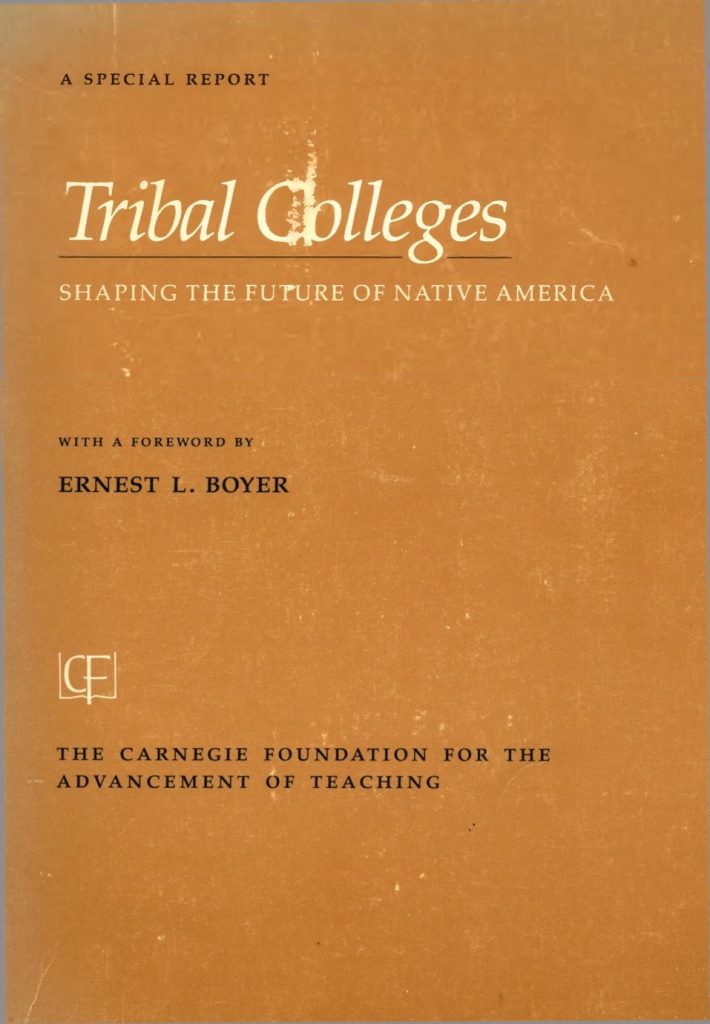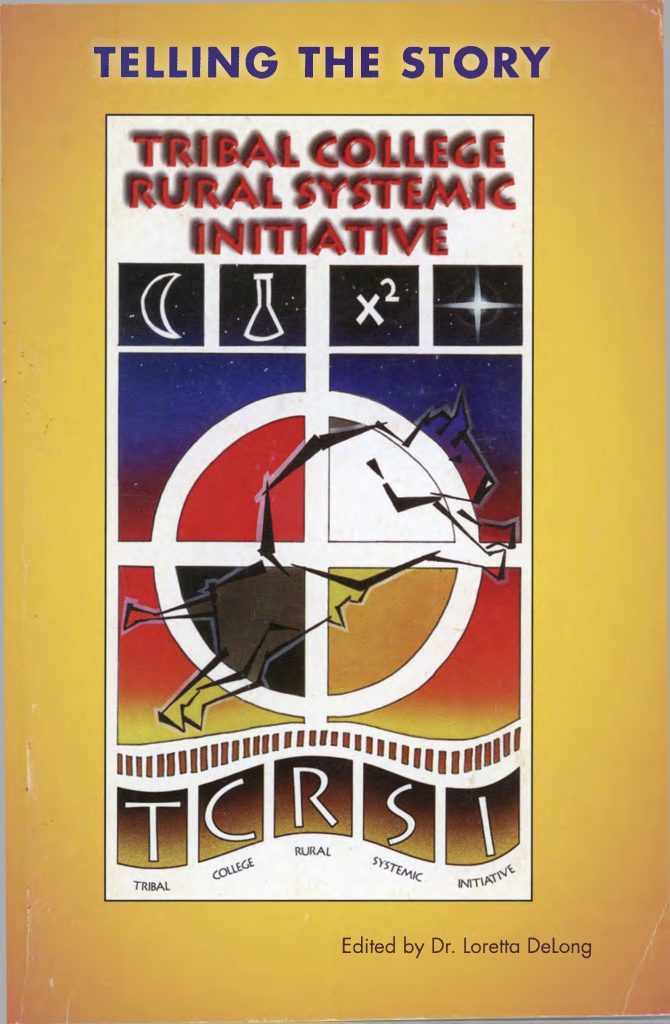Two long out of print policy reports documenting key moments in the history of tribal colleges are now available on Native Science Report.
By Paul Boyer

Two reports that capture important eras in the history of tribal colleges and the growth of their STEM programs, both long out of print, are now available on Native Science Report in electronic formats. The newly available documents include a landmark policy report by the Carnegie Foundation for the Advancement of Teaching and a monograph exploring the impact of the National Science Foundation’s groundbreaking Rural Systemic Initiative.
Tribal Colleges: Shaping the Future of Native America, released by the Carnegie Foundation for the Advancement of Teaching in 1989, was the first policy report to investigate the work and impact of Native-serving institutions of higher learning. At a time when few people knew of their existence, the report argued for their value and urged the nation to provide more financial support to the still-struggling tribal college movement.
Carnegie Foundation President Dr. Ernest Boyer, writing in the report’s forward, argued that tribal colleges offered hope to reservations long neglected by the educational establishment. “After years of brutal physical hardship and disorienting cultural loss, Native Americans—through the tribal college movement—are building new communities based on shared traditions,” he said. “They are challenging the conditions that plague their societies and continue to threaten their survival.”
Drawing on information gathered from site visits to six institutions, the report praised the colleges for their ability to do more with less—teaching classes in trailers and converted basketball courts, building libraries from donated volumes, creating culturally-relevant teaching materials from scratch. It noted that Little Big Horn College’s chemistry lab was housed in an unused sewage treatment plant; students maneuvered across narrow catwalks to reach their improvised classroom.
However, the report forcefully argued that this deprivation ultimately reflected the federal government’s failure to meet its obligation to Native Americans. The report called on Congress to increase annual appropriations to the colleges authorized through the Tribally Controlled Community College Act and to provide funding for campus construction.
”Many of these institutions are forced to carry on their work in trailers and abandoned government buildings that other colleges would have hauled away or bulldozed over 20 years ago,” the report said. ”Such poor facilities not only restrict learning, but also make a powerful statement of neglect.”
The report also called on the nation’s mainstream colleges and universities to collaborate with tribal colleges in their regions and to accept the credits of transferring tribal college students, arguing that Native-serving institutions should be viewed as partners, not competitors.
Tribal college leaders noted the report’s impact. Reflecting the Carnegie Foundation’s prestige at the time, its release resulted in major press coverage and led to an immediate bump in federal funding. Salish Kootenai College President Joe McDonald often remarked at the time that two events put tribal colleges on the national map: The 1990 movie Dances with Wolves (which offered a sympathetic portrayal of Native Americans and generated national interest in indigenous communities), and the Carnegie Foundation report.
• • •
The second report now available in electronic format examines the origins and outcomes of The National Science Foundation’s Rural Systemic Initiative (RSI). Funded by an NSF grant and released by Turtle Mountain Community College in 2006, the monograph, Telling the Story, includes chapters by eight authors investigating the impact of the initiative, which worked to strengthen K-12 STEM education in underserved rural regions of America, including much of Indian Country.
The RSI is still remembered as a critical event in the history of the tribal colleges. For the first time, tribal colleges were entrusted to serve as lead institutions in a major NSF grant, which both validated their expertise and, at the same time, provided resources to the colleges that helped build their own STEM capacity. It was, argued report editor Dr. Loretta DeLong, “a once in a lifetime opportunity to apply for, administer, and implement a $10 million National Science Foundation Systemic Initiative.”
The report includes interviews with several NSF program officers and program directors who helped build the federal agency’s commitment to Native-serving colleges. While most of those early leaders are no long with the NSF, their work led to the formation of the NSF’s Tribal Colleges and Universities Program (TCUP). Dr. Jody Chase, who guided the RSI, now directs the two-decade old TCUP program.
The report includes a preface by the award-winning novelist Louise Erdrich, an enrolled member of the Turtle Mountain Band, who recalled applying for a teaching position at Turtle Mountain Community College in 1977. “I traveled to Belcourt to stay with my grandparents, and was interviewed by an unusually dedicated, smart and focused man named Carty Monette,” she said, recalling her interview with the college’s president. “We sat in his office, a room partitioned off from others in a complex of trailers and pre-fab houses carefully painted the TMCC beige-brown.”
To the enrichment of American literature, Erdrich accepted a writing fellowship instead, allowing her to complete her first book, but she offered an eloquent summary of what tribally controlled education means in the modern era. “What tribal education really comes down to, I think, is a combination of community voice, shared history and family knowledge,” she wrote. “It is composed of an intricate combination of old and new.”
Both reports are now permanently archived in Native Science Report’s Resources page, where several other related documents can be found, including a monograph examining the outcomes of all RSI programs, including projects targeting Appalachia, Alaska, South Texas, and the Ozarks, among other regions of “persistent rural poverty.”
Native Science Report is grateful to the Carnegie Foundation and Turtle Mountain Community College for making the monographs available for digitization and electronic publication through our website. We believe both documents are critical documents in the history of tribal colleges and will be useful to scholars and anyone wishing to understand the origins of the tribal college movement.
Paul Boyer is editor of Native Science Report.
Story published January 31, 2022
• • •
Enjoyed this story? Enter your email to receive notifications.


